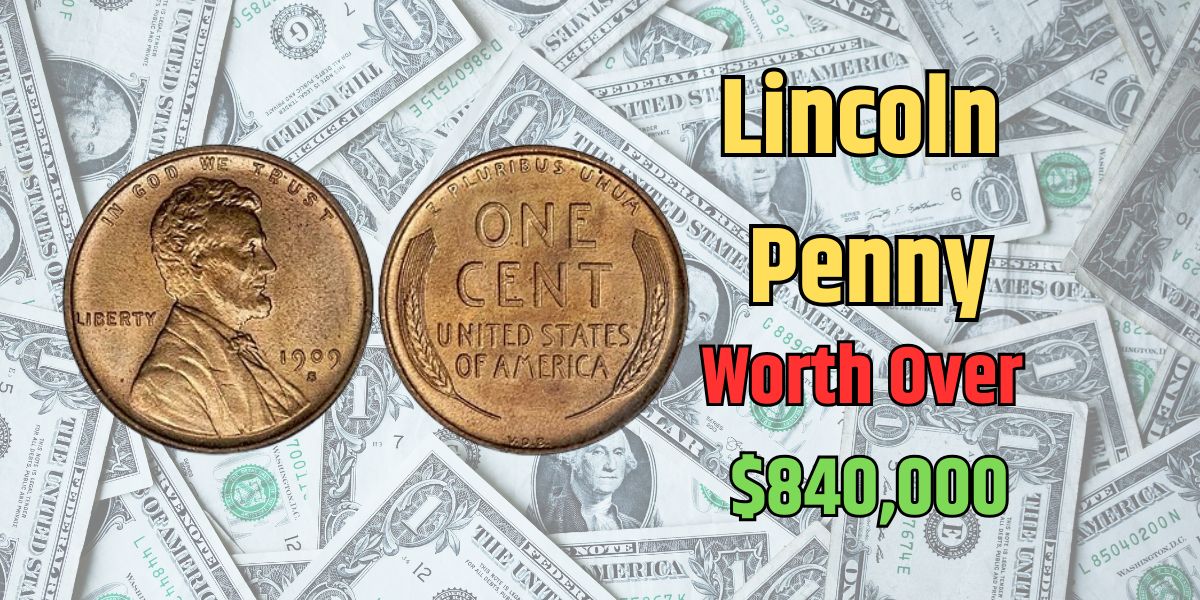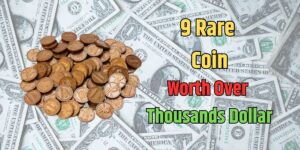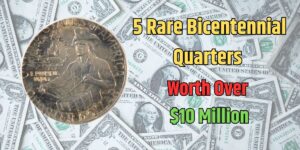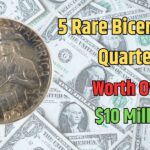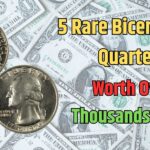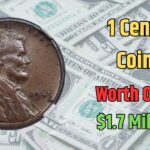Lincoln pennies are among the most widely recognized and circulated coins in U.S. history, but some have transcended their everyday utility to become prized collector’s items worth small fortunes. The 1943-D Bronze Cent, for instance, has fetched an astounding $840,000 at auction, making it the most valuable Lincoln penny to date. This coin, along with other rare Lincoln pennies, owes its exceptional value to historical circumstances, minting errors, and sheer rarity.
If you’re a coin collector or curious about the pennies in your pocket, this guide explores the most valuable Lincoln pennies, their unique features, and how to identify them.
Why Are Some Lincoln Pennies So Valuable?
Lincoln pennies can achieve extraordinary value due to a combination of the following factors:
1. Material Anomalies
During wartime, alternative metals were sometimes used in coin production, leading to errors. For example, the 1943-D Bronze Cent was mistakenly struck in bronze instead of steel, creating a valuable anomaly.
2. Design Errors
Errors such as doubled die designs, where elements like the date or inscriptions appear doubled, make coins like the 1969-S Doubled Die Obverse Cent highly sought after.
3. Misstrikes
Coins that are improperly struck during the minting process, resulting in unique shapes or misplaced designs, are rare and highly desirable.
These errors and variations turn ordinary pennies into rare collectibles with significant historical and monetary value.
The 1943-D Bronze Cent: The Most Valuable Lincoln Penny

The 1943-D Bronze Cent is considered the pinnacle of Lincoln penny collecting. Minted in Denver during World War II, when pennies were supposed to be made of steel to conserve copper for the war effort, this coin was mistakenly struck on a bronze planchet.
- Mint Location: Denver (denoted by the “D” mint mark)
- Material: Bronze (instead of steel)
- Auction Price: Up to $840,000
Its rarity stems from the fact that only a handful of bronze pennies were minted in 1943, and the Denver variant is the scarcest. This coin remains a dream find for collectors.
Other Notable Rare Lincoln Pennies
1. 1943-S Bronze Cent

- Mint Location: San Francisco (“S” mint mark)
- Auction Price: $504,000
- Key Features: Struck in bronze with a rich brown patina.
- Rarity: Few examples exist, making this one of the most coveted Lincoln pennies.
2. 1943 Bronze Cent (Philadelphia Mint)

- Mint Location: Philadelphia (no mint mark)
- Auction Price: $372,000
- Estimated Number Available: Approximately 20 known examples.
- Significance: First discovered by a collector in 1957, this coin’s legend grew as stories spread about its potential value.
3. 1943 Bronze Lincoln Cent

- Auction Price: $348,000
- Key Features: Warm bronze hue with occasional red tones.
- Notability: This coin highlights the production anomalies of the 1943 penny series.
4. 1969-S Doubled Die Obverse Lincoln Cent

- Mint Location: San Francisco (“S” mint mark)
- Auction Price: Approximately $126,000
- Key Feature: Doubled die error causing noticeable doubling in the date and lettering.
- Collectability: A favorite among collectors for its striking visual error.
Summary of Rare Lincoln Pennies and Their Value
| Coin Name | Mint Location | Auction Price | Unique Feature |
|---|---|---|---|
| 1943-D Bronze Cent | Denver | $840,000 | Minted in bronze instead of steel |
| 1943-S Bronze Cent | San Francisco | $504,000 | Bronze misstrike with rich patina |
| 1943 Bronze Cent (Philadelphia) | Philadelphia | $372,000 | Limited quantity, bronze instead of steel |
| 1969-S Doubled Die Obverse | San Francisco | $126,000 | Doubled die creating visual doubling effect |
How to Check If Your Pennies Are Valuable
Follow these steps to determine whether your Lincoln pennies are rare and valuable:
1. Check the Year
Focus on pennies from 1943, as they are often the most valuable due to the unique shift from copper to steel that year.
2. Look for Mint Marks
Identify the mint location using the letter mark on the coin:
- “D” for Denver.
- “S” for San Francisco.
- No mint mark typically indicates Philadelphia.
3. Inspect for Errors
- Use a magnifying glass to look for anomalies like doubling in the lettering or date.
- Observe the coin’s color—bronze pennies will have a reddish-brown hue, unlike steel pennies, which are silver-gray.
4. Seek Professional Appraisal
If you believe you’ve found a rare penny, consult a certified numismatist or professional coin appraiser to confirm its authenticity and value.
Why These Pennies Matter
Rare Lincoln pennies are more than valuable collectibles; they represent unique moments in history and the intricacies of the minting process. From wartime resource conservation to accidental errors, these coins offer a tangible connection to the past while holding the promise of significant financial rewards.
Whether you’re a seasoned collector or simply curious about the coins in your pocket, paying attention to these hidden gems could lead to a life-changing discovery.
FAQs
What makes the 1943-D Bronze Cent so valuable?
Its rarity and historical significance as a minting error during World War II make it incredibly valuable, with one example selling for $840,000.
How can I tell if my 1943 penny is made of bronze?
Bronze pennies have a reddish-brown hue, while steel pennies are silver-gray. A magnet test can also help—bronze pennies won’t stick to a magnet.
Are pennies with doubling errors always valuable?
Yes, doubling errors, such as those seen on the 1969-S Doubled Die Obverse, are highly collectible and can fetch significant sums.
Where can I sell rare pennies?
You can sell rare coins through reputable auction houses, certified coin dealers, or online platforms specializing in numismatics.
Should I clean my old pennies before selling them?
No, cleaning coins can damage their surface and reduce their value. It’s best to leave them in their natural state.
